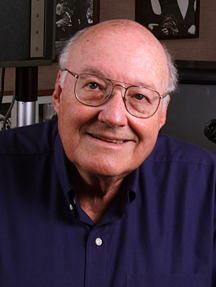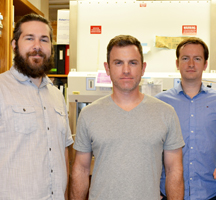Researchers Discover a Signal Driving Type 1 Diabetes
Scientists at The Scripps Research Institute (TSRI) have found a potential therapy to stop type 1 diabetes in the prediabetic stage.
Type 1 diabetes (T1D) is a serious autoimmune disease afflicting more than 200,000 Americans every year—and the numbers are growing. The disease is due to autoreactive cells of the immune system, called T cells, which become activated, migrate to and enter the islets of Langerhans (in the pancreas) where they kill beta cells, the cells that make insulin. Insulin is required to control glucose metabolism—and T1D occurs when 70 to 80 percent of beta cells are killed. People with T1D will die if they do not take daily insulin.
Although insulin replacement therapy prevents death, it does not prevent complications such as heart disease, stroke, kidney disease or wound healing—events that frequently accompany T1D. Thus, preventing the development, migration or entry of autoimmune T cells into the islets, and inhibiting the ability of a few that may enter from killing beta cells, would be a major therapeutic advancement.
This means it is important for scientists to understand the signals underpinning the disease. In the prediabetic stage of T1D, autoreactive T lymphocytes migrate to the pancreas and surround clusters of cells called islets. The signaling cue that allows these autoimmune cells to enter islets has remained an enigma for decades.
"It was important to figure out what the signal was that brings these auto-reactive cells into the islets," said TSRI Professor Michael B.A. Oldstone, senior author of the study.
Oldstone and his colleagues now report in the journal Proceedings of the National Academy of Sciences that a single pharmacologic agent, S1PR1 agonist, can prevent the autoimmune cells that migrate from lymphoid tissues to sleeves around the islets from entering the islets. Further, the S1PR1 agonist also appeared to up-regulate specific molecules on T cells that are known to cause a phenomenon called T cell exhaustion likely impairing their ability to kill beta cells.
Using a transgenic mouse model for T1D the scientists first discovered that an immune molecule called interferon-1 alpha (a), but not interferon beta, provided the signal allowing autoreactive T cells to enter into the islets.
The researchers found that blockade of interferon-a signaling with an antibody to interferon-a, or an antibody to block the receptor that interferon-a binds to, prevented T cell entry into the islets. Further, treatment with S1PR1 agonist, shown previously by workers in the laboratories of Oldstone and TSRI Professor Hugh Rosen to block interferon-a production, prevented T1D.
Interestingly, an analogue of the S1PR1 agonist used in this study has been shown to successfully treat both multiple sclerosis and ulcerative colitis in late-stage clinical trials.
"What we've done is get to the root cause of T1D, and this allowed us to use strategies to prevent diabetes," said Oldstone.
"We showed that we can prevent diabetes, and one potential way to do that is by suppressing IFN-a signaling. Discovering the function of IFN-a has tremendous clinical relevance," said Brett Marro, the study’s lead author.
The scientists said preventing the death of insulin-producing cells is now therapeutically possible, as there are protein markers present in the prediabetic state when therapy can begin and the signal to block and having or producing additional reagent(s) to prevent T cell/beta cell engagement is on hand.
Going forward, the researchers plan to continue studying interferon-a signaling in a transgenic model where T1D, as in humans, develops slowly, has the same prediabetic blood signals as humans and thus likely closely resembles the progression of human disease.
In addition to Oldstone, Rosen and Marro, authors of the study, "Progression of type 1 diabetes from the prediabetic stage is controlled by interferon-a signaling," were Brian C. Ware and Juan Carlos de la Torre of TSRI; and Jaroslav Zak of TSRI and the University of Oxford.
The study was supported by the National Institutes of Health NIH grant AI009484 (MBAO) and NIH training grants 5T32AI007354-2, 5T32AI007244-33, and the Jeanette Bertea Hennings Foundation (BM), and a Skaggs-Oxford Scholarship (JZ).
Send comments to: press[at]scripps.edu















